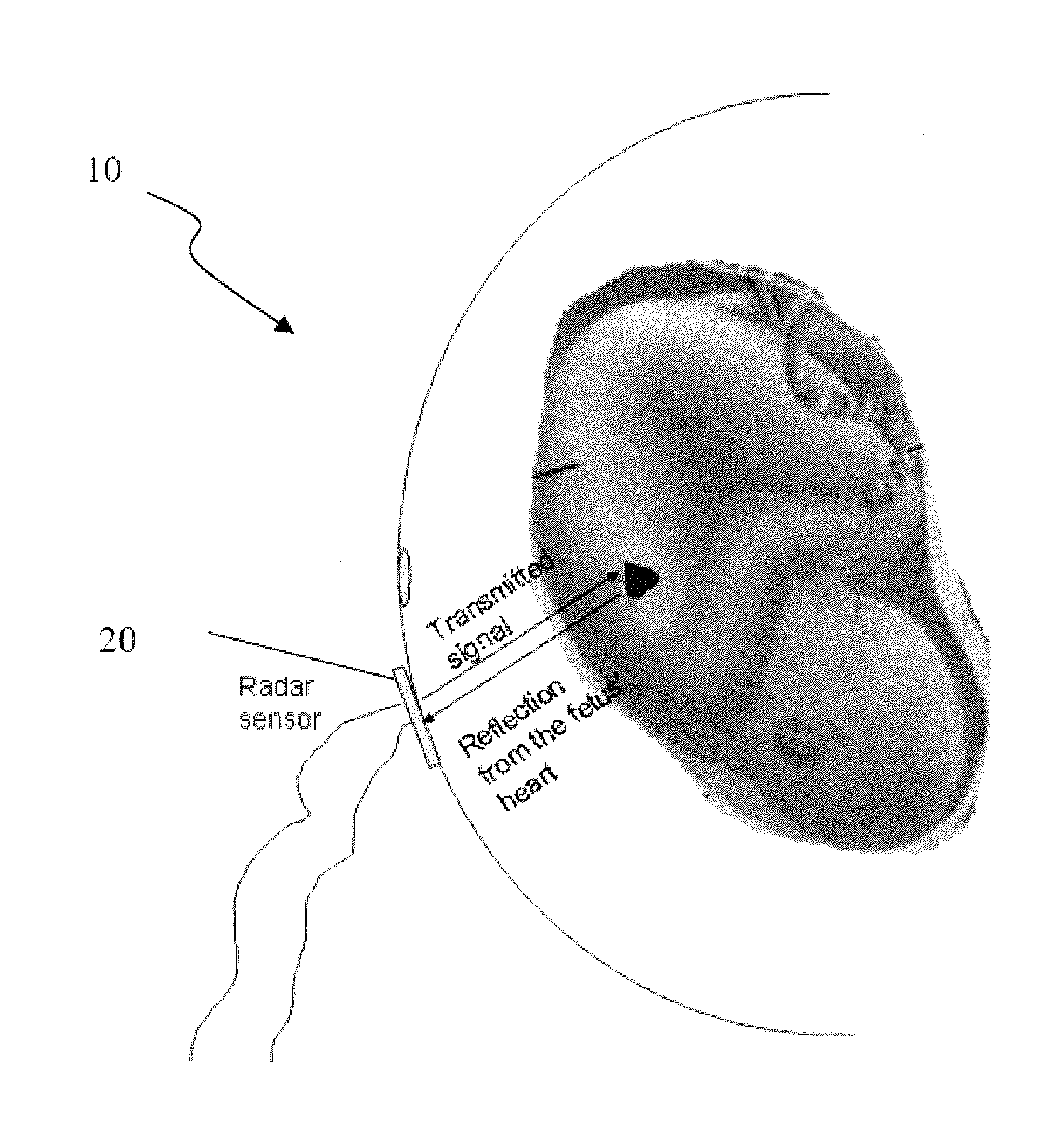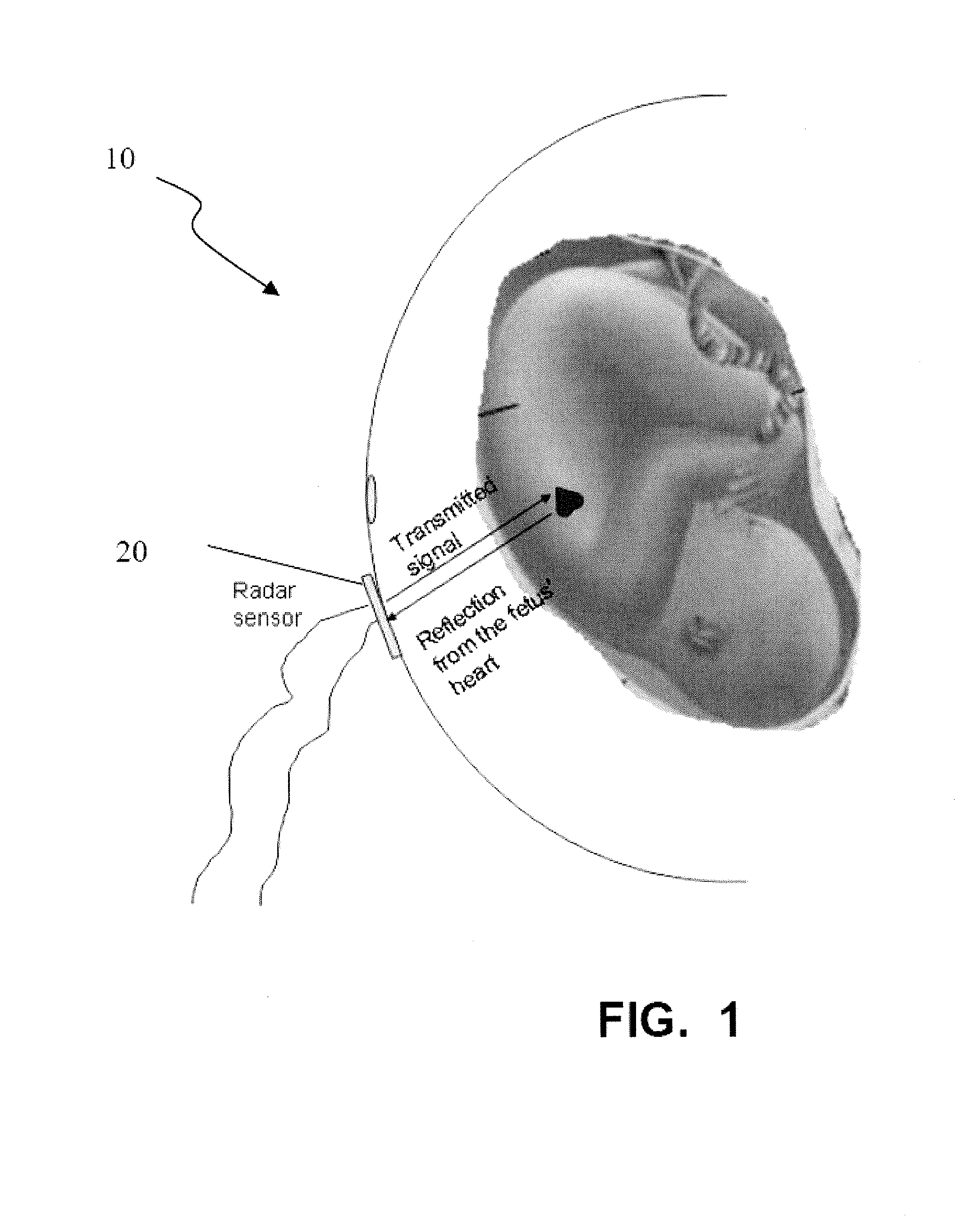Fetal monitoring device and methods
a technology of fetal monitors and monitors, applied in the field of fetal monitors, can solve the problems of limiting the power applied to the fetus and/or mother, increasing or decreasing the power of output uwb signals, etc., and achieves the effects of improving range bin resolution, reducing costs, and extending coverag
- Summary
- Abstract
- Description
- Claims
- Application Information
AI Technical Summary
Benefits of technology
Problems solved by technology
Method used
Image
Examples
Embodiment Construction
[0084]Any of the fetal monitoring systems described herein may include one or more UWB sensors for emitting UWB signals and for receiving reflections of the UWB signals and a processor configured to process the reflected UWB signals. The processor may be configured to organize the reflected signals into a matrix indexed by time and by depth into the tissue, or by frequency and depth into the tissue. The processor may also be configured to extract movement information specific to two or more indication of fetal and / or maternal health.
[0085]For example, in some variations, the fetal medical radar sensors described herein include a sensor (or “sensor unit”) with associated electronics and / or logic. The logic may include hardware, firmware, and / or software to perform the functions described herein. The sensor 20 may include a transmitting (Tx) antenna and a receiving (Rx) antenna, or a combined transmitting / receiving antenna. The sensor 20 may communicate in a bidirectional mode with a ...
PUM
 Login to View More
Login to View More Abstract
Description
Claims
Application Information
 Login to View More
Login to View More - R&D
- Intellectual Property
- Life Sciences
- Materials
- Tech Scout
- Unparalleled Data Quality
- Higher Quality Content
- 60% Fewer Hallucinations
Browse by: Latest US Patents, China's latest patents, Technical Efficacy Thesaurus, Application Domain, Technology Topic, Popular Technical Reports.
© 2025 PatSnap. All rights reserved.Legal|Privacy policy|Modern Slavery Act Transparency Statement|Sitemap|About US| Contact US: help@patsnap.com



